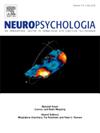Total recall: Detecting autobiographical memory retrieval in the absence of behaviour
IF 2
3区 心理学
Q3 BEHAVIORAL SCIENCES
引用次数: 0
Abstract
Functional neuroimaging has fundamentally changed our understanding of disorders of consciousness (DoC). While many DoC patients exhibit minimal to no behavioural responsiveness, a significant minority show neural evidence of awareness and preserved cognitive functioning. Although several cognitive functions have been explored in DoC patients, autobiographical memory -- the ability to form and retrieve personal memories -- has yet to be investigated. To address this gap, we used functional magnetic resonance imaging (fMRI) to investigate autobiographical memory in one DoC patient. The patient viewed video clips across three conditions: (1) Own - clips recorded from their perspective during a recent mall visit; (2) Other - clips from a healthy control’s visit to the same mall; and (3) Bookstore - novel clips from an entirely different store that had not been visited. We trained a linear support vector classifier to associate fMRI activity in canonical autobiographical memory regions with each condition using data from twelve healthy participants. We then applied the trained model to the patient’s data to ’decode’ which condition their fMRI activity predicted. The model accurately distinguished between Own, Other, and Bookstore conditions in the patient (Balanced Accuracy = 0.448, p = .032), with performance within the control group range (p = .068). Similarly, the model distinguished between the Own and Other conditions above chance (Balanced Accuracy = 0.609, p = .032) and within the control group’s distribution (p = .620), suggesting that the patient was still able to differentiate personal experiences from visually similar scenes, despite being behaviourally unable to report that this was the case. These findings provide preliminary evidence that autobiographical memory processes, critical to conscious awareness and identity, remain intact in some DoC patients, shedding further light on their covert capabilities and inner experiences.
全面回忆:在没有行为的情况下检测自传体记忆的检索。
功能性神经影像学从根本上改变了我们对意识障碍(DoC)的理解。虽然许多DoC患者表现出很少或没有行为反应,但有相当一部分患者表现出意识和保留的认知功能的神经证据。虽然在DoC患者中已经探索了几种认知功能,但自传式记忆——形成和检索个人记忆的能力——尚未得到研究。为了解决这一差距,我们使用功能磁共振成像(fMRI)来研究一位DoC患者的自传式记忆。患者在三种情况下观看视频片段:(1)自己在最近一次购物中心访问期间从自己的角度录制的视频片段;(2)其他——健康对照组访问同一购物中心的片段;(3)书店——从一个完全不同的、没人去过的书店里找来的小说片段。我们训练了一个线性支持向量分类器,使用来自12名健康参与者的数据将典型自传体记忆区域的fMRI活动与每种情况联系起来。然后,我们将训练好的模型应用于患者的数据,以“解码”他们的fMRI活动预测的条件。该模型准确地区分了患者的Own、Other和Bookstore条件(Balanced Accuracy = 0.448, p = 0.032),其性能在对照组范围内(p = 0.068)。同样,该模型区分了自身和其他条件(平衡精度= 0.609,p = 0.032)和对照组的分布(p = 0.620),这表明患者仍然能够将个人经历与视觉上相似的场景区分开来,尽管在行为上无法报告这种情况。这些发现提供了初步证据,表明对意识意识和身份至关重要的自传式记忆过程在一些DoC患者中仍然完好无损,进一步揭示了他们的隐蔽能力和内心体验。
本文章由计算机程序翻译,如有差异,请以英文原文为准。
求助全文
约1分钟内获得全文
求助全文
来源期刊

Neuropsychologia
医学-行为科学
CiteScore
5.10
自引率
3.80%
发文量
228
审稿时长
4 months
期刊介绍:
Neuropsychologia is an international interdisciplinary journal devoted to experimental and theoretical contributions that advance understanding of human cognition and behavior from a neuroscience perspective. The journal will consider for publication studies that link brain function with cognitive processes, including attention and awareness, action and motor control, executive functions and cognitive control, memory, language, and emotion and social cognition.
 求助内容:
求助内容: 应助结果提醒方式:
应助结果提醒方式:


